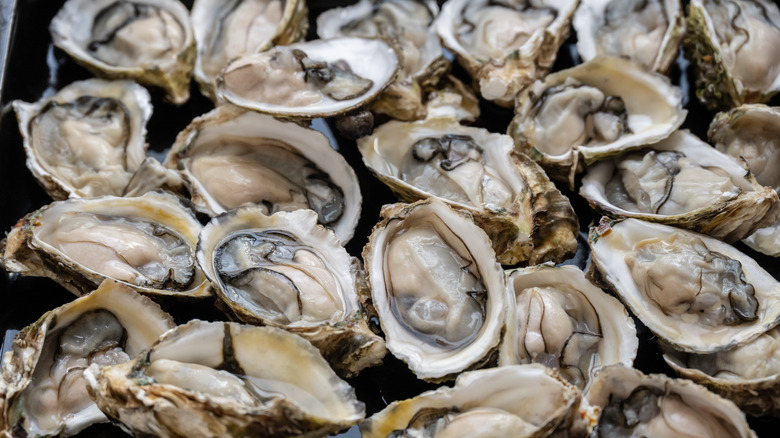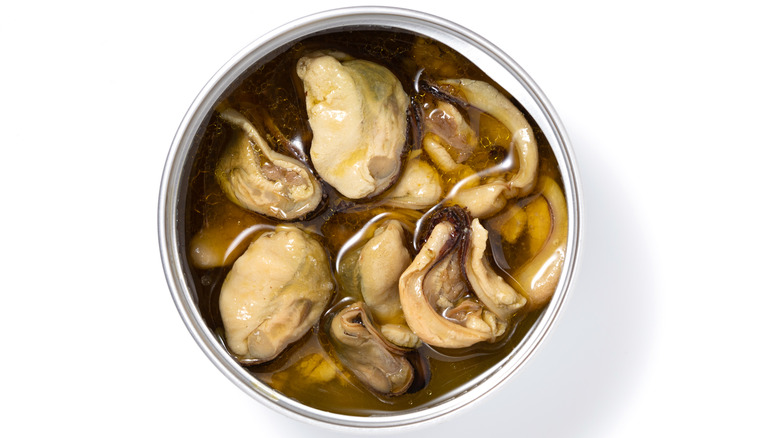The Most Important Rule To Follow When Making Home-Canned Oysters
In recent years, canning foods at home has become a popular hobby. However, canning food in general, and seafood in particular, can be dangerous work, according to the Centers for Disease Control and Prevention (CDC), because of the potential for food poisoning. If you're planning to can oysters yourself, then it's important that you do so safely. There's one important rule to canning oysters that you should always follow — keep your oysters alive until the canning process.
When canning oysters, fresher is better, so you want to buy or catch live oysters. You shouldn't can raw dead oysters, according to the National Center for Home Food Preservation. Always use live oysters and keep them on ice, which, in addition to helping with taste, also helps maintain food safety. When you get ready to can the oysters, that's when you will cook them, by baking them in their shells, shucking them, and then washing the meat in a saltwater solution. The saltwater solution will help preserve the oysters for the canning process.
In general, you also want to be sure that you add adequate amounts of brine or liquid to your jars. This is important as it will help the oysters stay juicy despite being canned. Although canned oysters can keep quality for up to a year, it's important to get things right during the canning process to avoid health hazards.
Selecting the right oysters
It's important to properly store your oysters until it's time for canning. Ideally, you would can the oysters as soon as possible to minimize any potential health risks. However, oysters can live up to a month out of the ocean if kept in proper storage. To properly store a live oyster, put them in the fridge on a baking tray, which will keep them cold and allow them to breathe. You should also put a damp paper towel or cloth on top of them to keep them moist.
How can you tell the difference between a live oyster and a dead one? Well, live oysters generally are moist and also have a tightly closed shell. When oysters die, they loosen their shells and also dry out. You should avoid canning oysters with these signs. A dead oyster has a higher chance of bacteria growth. For this reason, you should also avoid eating or canning oysters during warmer months.
Although oysters can live up to a month out of the water, for quality reasons you want to can oysters within seven days of them being taken out. As with most seafood, the sooner you cook the meat, the better.
How to properly can oysters
In addition to using live oysters, you want to make sure that you properly can the oysters, and that the jars are sealed. As for the actual canning process, you will need to use a pressure canner. Otherwise, you won't be able to safely can the oysters even if you can them fresh.
According to the CDC, there is a risk of botulism if the seafood isn't properly canned. Since oysters have a low acid level, they can't safely be canned with a water bath of boiling water, as you would do with various fruits and pickled vegetables. Instead, canning oysters requires using a pressure canner, which raises the temperature inside the can or jar higher than the temperature for boiling water. This should effectively lower the risk of botulism, although nothing is risk-free.
Additionally, you will want to make sure the seals are properly set. Let your jars cool for 12 to 24 hours, then put pressure on the center of the lid with your finger. If the jar's lid isn't properly sealed, then it will move or spring up. Go to the doctor or hospital if you or another shows signs of potential food poisoning, and follow these tips to help mitigate the risk.


